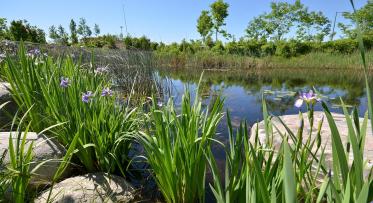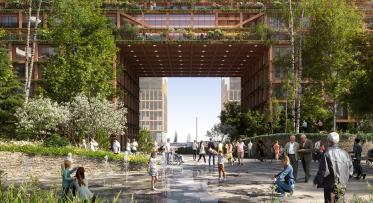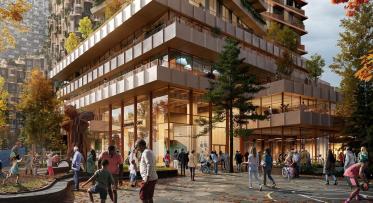Data is Now Starting to Drive the Decisions We Make About Green Buildings
Collecting and analyzing a building's energy consumption data will help us make better decisions about how to build and manage greener, more energy-efficient buildings.
POSTED: MAY 21, 2014
BY: JONATHAN LASKI
Buildings are responsible for a majority of our energy use and a majority of our greenhouse gas emissions in developed parts of the world. In the City of Toronto, for example, residential, commercial and industrial buildings accounted for 61% of greenhouse gas emissions in 2007.
Knowing the above, and with sustainable building design now more firmly entrenched in the Ontario Building Code, the Toronto Green Standard, and Waterfront Toronto’s Minimum Green Building Requirement, more nuanced questions relating to energy consumption in buildings can be researched.
For example, does a building on a corner lot use more energy for electricity and heating/cooling than a building in the middle of a block?
How is energy use intensity (EUI), that is, the number of kilowatt hours consumed by each square metre in a building over the course of a year, affected by adding each additional floor of a high-rise residential or commercial building?
As data from the actual energy consumption of buildings becomes increasingly available, it is these types of questions which building experts can begin to investigate.
As the master developer for buildings in the designated waterfront area, Waterfront Toronto is also interested in these lessons. Sustainable development is embedded as a core principle in every aspect of our revitalization efforts. Our approach to building complete, mixed-use communities includes embracing strategies that will ensure our residential and commercial developments maximize resource efficiency. As we gather more best practices and knowledge about how buildings actually consume energy, such as through a better understanding of materials, window and envelope performance, tenant consumption and equipment commissioning, Waterfront Toronto will work with the building industry to determine how these changes can be implemented in future waterfront residential and commercial projects.
 Insights from energy-use data will inform Waterfront Toronto's minimum green building and performance requirements – helping shift the market towards more sustainable design and construction. (Image credit: FreeFoto.com)
Insights from energy-use data will inform Waterfront Toronto's minimum green building and performance requirements – helping shift the market towards more sustainable design and construction. (Image credit: FreeFoto.com)
Building performance standards like LEED and measures of consumption like EUI, are instrumental in the on-going improvement of the green building industry and in the early accumulation of valuable building energy data. We wonder if perhaps building energy data is entering a new phase, “Energy Use 2.0”, where the amount of data collected from buildings has reached a tipping point where it can be sliced and diced to reveal new learnings.
The two questions posed at the beginning of this post are actually investigated by Professor Constantine Kontokosta Ph.D., P.E. and deputy director of the Center for Urban Science + Progress at New York University. The study reports the following findings, using data from New York City:
- Building location seems to significantly affect performance – that is, freestanding and corner lot buildings use, on average, 9% more energy than middle-of-the-block buildings;
- Addition of extra floors affects performance – that is, each additional floor added to a building increases source EUI by 1%;
- Energy Star-labelled buildings have a 10% lower EUI than non-Energy Star-labelled buildings;
- Buildings that are Energy Star-labelled + LEED certified have a significantly lower EUI (205 ekWh/m2/year less than buildings without those credentials);
- When data centres increase in gross floor area by 10%, source EUI increases by 34%.
The implications of these findings, if corroborated by similar data-driven findings from other neighbourhoods and cities, could significantly impact neighbourhood design and planning. With rising energy prices, corner lots, which traditionally are deemed more desirable and more valuable, could be replaced by middle block buildings as preferred by residential and commercial developers, especially high energy users.
Waterfront Toronto continues to observe findings coming from jurisdictions with mandatory benchmarking bylaws and their subsequent reports, like this one referenced above. This data provides key lessons that support our ongoing refinement of green building requirements as well as continued dialogue with other drivers of sustainable communities, including the City of Toronto and the real estate industry regarding improved energy performance.




